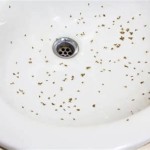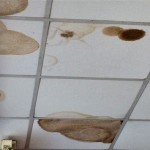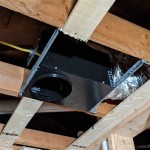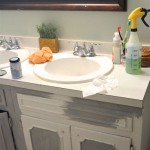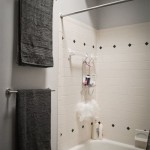How to Remove Old Bathroom Exhaust Fan Housing
Replacing an old bathroom exhaust fan housing is a common home improvement project that can enhance ventilation and improve the overall aesthetic of the bathroom. The process involves carefully removing the existing housing, taking note of the electrical connections, and installing the new housing. This article will guide you through the steps involved in safely and effectively removing an old bathroom exhaust fan housing.
Gathering Necessary Tools and Materials
Before embarking on the removal process, it is essential to gather the necessary tools and materials. These typically include:
- A screwdriver set (including Phillips and flathead screwdrivers)
- A utility knife
- A pair of wire strippers
- Electrical tape
- A voltage tester
- A ladder
- Safety glasses
- Work gloves
It is crucial to prioritize safety by using appropriate safety gear and ensuring that the power to the bathroom exhaust fan is turned off at the circuit breaker. Always consult the manufacturer's instructions for specific tools and materials required for your particular exhaust fan model.
Disconnecting the Electrical Wiring
Once the power to the bathroom exhaust fan is off, the next step is to disconnect the electrical wiring. This involves carefully identifying the wires connected to the fan motor and the fan switch. Most exhaust fans have two wires: a black wire (hot) and a white wire (neutral). There may also be a ground wire, typically green or bare copper.
Using a voltage tester, confirm that the wires are de-energized. Once confirmed, carefully loosen the wire terminals on the fan motor. If the wire connections are difficult to access, it may be necessary to remove the fan motor from its housing. Once the wires are disconnected, label them clearly to ensure proper reconnection during installation.
Removing the Fan Housing
With the electrical wiring disconnected, the next step is to remove the fan housing. This process typically involves removing any screws or clips holding the housing in place. The location and type of fasteners may vary depending on the fan model. Carefully examine the housing for any visible screws or clips. Use a screwdriver or pliers to remove these fasteners, paying attention to any specific removal instructions provided by the manufacturer.
In some cases, the fan housing may be secured by a decorative trim ring or a grille. If this is the case, remove these components first before attempting to detach the main housing. Once all fasteners are removed, gently lift the housing from the ceiling. If the housing is stuck or difficult to remove, carefully inspect the surrounding area for any obstructions or additional fasteners that may be overlooked.
After removing the fan housing, carefully inspect it for any damage or signs of wear and tear. If any issues are identified, it may be necessary to replace the housing rather than reuse it. When removing the fan housing, it is essential to avoid damaging the surrounding ceiling or wall surface. If any damage occurs, it should be repaired before installing the new housing.
Installing the New Housing
Once the old housing is removed, the next step is to install the new housing. This process typically involves reversing the steps taken to remove the old housing.
First, align the new housing with the existing fan opening in the ceiling. Ensure that the housing is level and properly positioned. Then, attach the new housing to the ceiling using the provided screws, clips, or other fasteners. Make sure the fasteners are securely tightened to ensure the housing is firmly attached.
After securing the housing, reconnect the electrical wiring. Ensure that the wires are properly connected to the terminals on the motor and the fan switch. Check the wiring connections for any loose connections or damage. Once the wires are connected, apply electrical tape to any exposed wire ends to prevent accidental contact.
Finally, turn on the power at the circuit breaker and test the new fan housing. Ensure that the fan is functioning properly and that there are no signs of electrical problems. If any issues are identified, immediately turn off the power and seek professional assistance from an electrician.

Not Sure How To Remove Old Bathroom Fan Install New One Doityourself Com Community Forums

Help Can T Remove Old Bathroom Exhaust Fan Housing Doityourself Com Community Forums

Help Can T Remove Old Bathroom Exhaust Fan Housing Doityourself Com Community Forums

Help Can T Remove Old Bathroom Exhaust Fan Housing Doityourself Com Community Forums
Practical Sustaility Swap Out Your Old Inefficient Bathroom Fans Sunset Green Home

How To Replace A Bathroom Exhaust Fan Stanley Tools

How To Replace A Bathroom Fan With Pictures Wikihow

Remove Install A Bathroom Fan Grille In 1 Min

How To Replace A Bathroom Exhaust Fan Stanley Tools

How To Remove A Bath Fan
Related Posts

